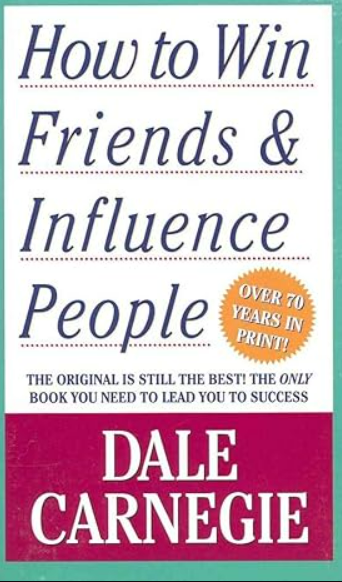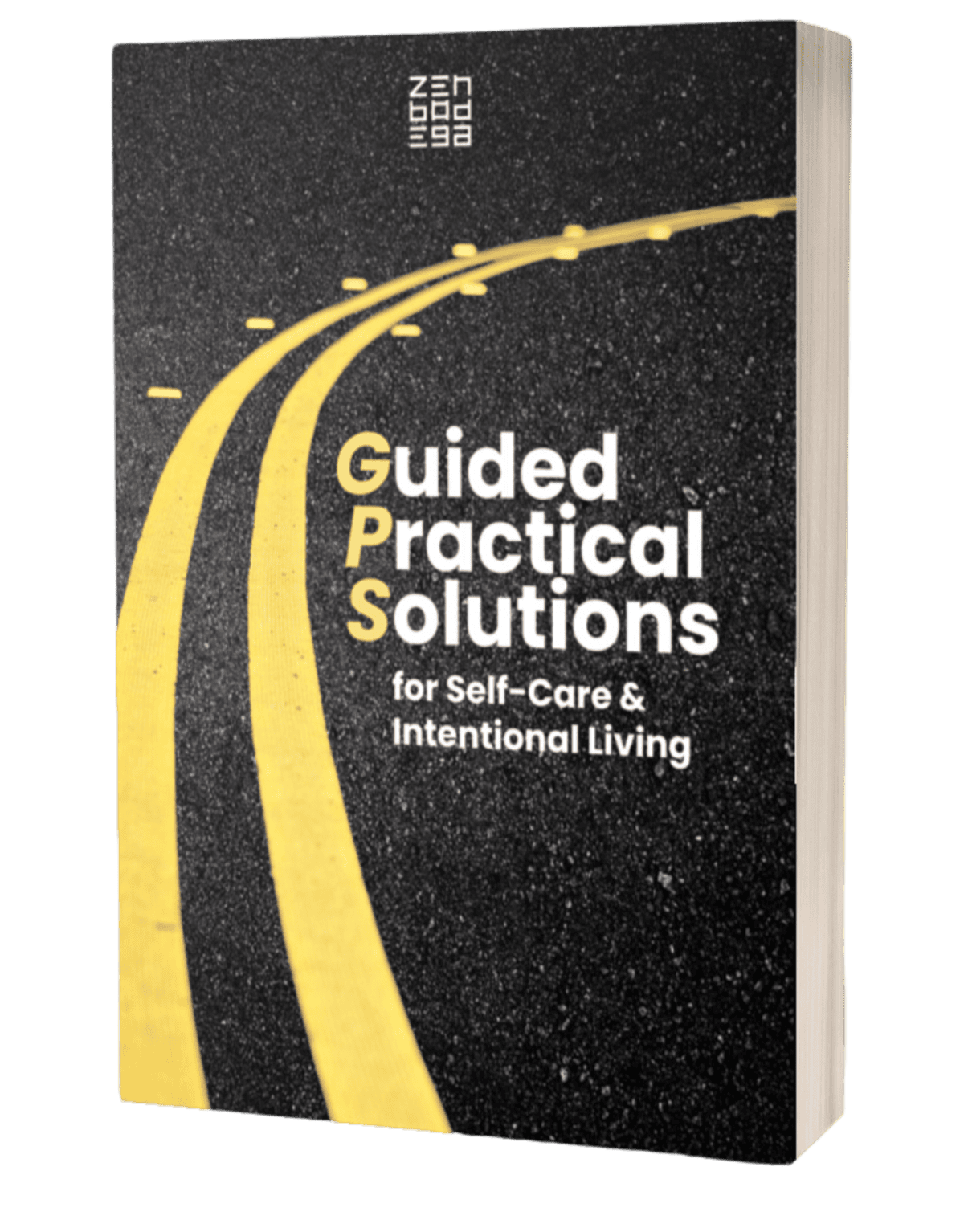Elevate Your Career: 5 Life-Changing Books for Intentional Success
In today’s fast-paced world, where personal and professional development is more crucial than ever, the habit of reading can be a transformative force.
We’ve all felt the desire to excel in our careers, seeking insights, strategies, and inspiration to guide us. Imagine having a trusted mentor at your fingertips, available anytime you open a book!
In this article, I’m excited to share a curated list of my favorite books that have significantly contributed to my career development. Each of these selections has not only been effective in shaping my professional journey but also offers valuable insights and strategies that can be instrumental in advancing your own career.
Book 1: “The 7 Habits of Highly Effective People” by Stephen R. Covey

In Stephen R. Covey’s timeless classic, “The 7 Habits of Highly Effective People,” we delve into seven powerful principles that can truly revolutionize your career.
Covey’s wisdom centers around shifting from a reactive mindset to a proactive one, emphasizing personal responsibility and empowerment. We’ll explore how these habits, such as “Begin with the End in Mind” and “Synergize,” are not just motivational phrases but practical strategies that can lead to career success.
Covey’s book goes beyond the surface, delving into the art of habit formation and personal effectiveness.
Habit 1 – Be Proactive in Your Career Development Process: Just like the mid-level manager in a tech company who took the initiative in problem-solving, being proactive is crucial in your career journey. This involves seeking out career development opportunities, taking on new responsibilities, and actively engaging in skills development. A proactive approach can lead to significant career growth and may even catch the eye of hiring managers for a new job or promotion.
Habit 2 – Begin with the End in Mind for Your Dream Job: Setting clear career goals, much like the entrepreneur with her startup vision, is essential in career planning. This habit involves understanding your desired career path, setting achievable goals (both short term and long term), and creating a career development plan that aligns with your professional and personal life.
Habit 3 – Put First Things First in Professional Development: Prioritizing tasks and focusing on what’s most important for your career development, similar to the marketing executive, is key. This might mean dedicating time to develop specific skills, seeking professional development opportunities, or balancing work life with personal life for better life balance.
Habit 4 – Think Win-Win in Building Relationships: Adopting a win-win approach in professional interactions, as demonstrated by the sales leader, can enhance your career journey. This habit is about building relationships, effective communication skills, and creating opportunities that benefit both you and your organization.
Habit 5 – Seek First to Understand, Then to Be Understood in Career Communications: Effective communication, exemplified by the human resources professional, is vital in every career path. This involves active listening, understanding the perspectives of others, and then effectively conveying your own ideas and needs.
Habit 6 – Synergize for Career Growth: Collaboration and embracing diverse viewpoints, as shown by the project manager, are essential in today’s job market. Synergy in a team can lead to innovative solutions, and new skills development, and can play a significant role in your career development journey.
Habit 7 – Sharpen the Saw for Continuous Career Development: Continuous learning and self-improvement, as practiced by the finance analyst, are crucial for long-term career success. This habit involves engaging in professional development opportunities, such as business classes, workshops, or mentorship with the right mentor, to ensure ongoing growth in your career.
Book 2: “Mindset: The New Psychology of Success” by Carol S. Dweck

In “Mindset: The New Psychology of Success,” Carol S. Dweck introduces us to a fundamental concept that can shape the course of our careers—the distinction between a fixed mindset and a growth mindset.
- Growth Mindset and Career Progression: Embracing a growth mindset is pivotal for career development. It fosters a belief in the potential for professional growth and the development of specific skills, making it easier to navigate the career ladder and explore various career options in today’s job market.
- Overcoming Challenges: Individuals with a growth mindset are more adept at handling challenges and setbacks in their career journey. They view these as opportunities for learning and skills development, essential for achieving their dream job or desired career.
- Valuing Feedback: Constructive feedback is a cornerstone of effective career development. A growth mindset enables individuals to utilize feedback for professional development, enhancing skills like decision-making and communication.
- Lifelong Learning and Development: The book emphasizes the importance of continuous learning and self-assessment in career development planning. This approach is vital in acquiring new skills, pursuing further education like business classes, and staying relevant in a dynamic job market.
- Goal Setting and Achievement: Setting achievable goals, both short-term and long-term, is a key aspect of the career development process. Dweck’s insights encourage setting realistic goals, which are essential for maintaining motivation and focus throughout one’s career journey.
- Resilience in Adversity: Career paths often involve facing new responsibilities and challenges. A growth mindset cultivates resilience, helping individuals to maintain a healthy work-life balance and persevere through difficult times.
- Fostering Team and Organizational Growth: For those in leadership or human resources, promoting a growth mindset can create a more innovative and collaborative work environment, enhancing the overall development opportunities within the organization.
- Transforming Personal and Professional Life: The book provides practical strategies for shifting from a fixed to a growth mindset. This transformation is crucial not only for personal development but also for professional advancement, as it encourages self-awareness and the pursuit of long-term career goals.
- Real-world Applications: Through various case studies, Dweck illustrates how adopting a growth mindset can lead to success in both personal and professional realms. These examples serve as inspiration and guidance for those at any stage of their career development journey.
- Role of Mentors and Coaches: The importance of finding the right mentor or career coach is highlighted. These individuals can guide you in goal setting, developing soft skills, and creating opportunities for career growth.
Book 3: “How to Win Friends and Influence People” by Dale Carnegie

In “How to Win Friends and Influence People,” Dale Carnegie presents a treasure trove of timeless principles in communication and relationship-building that can significantly impact your career.
While Carnegie’s book was first published in 1936, its principles remain as relevant as ever in modern professional environments.
Improved Leadership through Empathy: A prime example of effective career development is seen in a team leader at a tech firm who embraced the principles of empathy and understanding, as advocated by Dale Carnegie. This approach not only enhanced their leadership skills but also fostered a more cohesive team environment, leading to higher morale and increased productivity. It demonstrates how soft skills like empathy are crucial in today’s professional landscape.
Career Advancement through Effective Communication: An entry-level employee, by applying Carnegie’s advice on effective communication, was able to articulate her ideas clearly and confidently in meetings. This not only showcased her skills but also her potential for more responsibility, leading to recognition and a swift promotion. It highlights the importance of communication skills in career development and how they can open doors to new job opportunities and career paths.
Enhanced Sales Techniques: In the realm of sales, adopting Carnegie’s strategies for understanding customer needs and building rapport can lead to significant career growth. A salesperson who employed these techniques saw a notable increase in sales and customer satisfaction, illustrating how developing specific skills and focusing on customer relationships can lead to success in today’s job market.
Conflict Resolution in the Workplace: An HR manager used Carnegie’s conflict resolution tactics to effectively navigate and resolve a long-standing dispute between departments. This not only improved the work environment but also highlighted the role of human resources in fostering a positive company culture and developing professional relationships.
Networking Success: Networking is a key component of career development. An entrepreneur who applied Carnegie’s principles at networking events, focusing on genuine interest in others, found this strategy instrumental in building influential relationships, leading to valuable connections and business opportunities.
Building Influential Relationships: Similarly, a marketing executive used Carnegie’s advice to forge strong relationships with key stakeholders, benefiting their marketing campaigns. This underscores the importance of building relationships and networking in achieving career goals.
Transforming Customer Service: In customer service, applying Carnegie’s techniques in active listening and addressing concerns can lead to improved customer relations and a decrease in complaints. This shows how skills development, particularly in communication and empathy, is crucial in various career paths.
Personal Growth Leading to Professional Success: Finally, an individual focusing on personal development using Carnegie’s principles saw a direct impact on their career. Increased self-confidence and better interpersonal skills translated into professional growth, highlighting the interconnectedness of personal and professional development.
Book 4: “Lean In: Women, Work, and the Will to Lead” by Sheryl Sandberg

Sheryl Sandberg’s “Lean In” offers a profound exploration of the unique challenges and opportunities that women encounter in the modern workplace.
This book has significantly influenced the landscape of career development, particularly in the context of gender dynamics in the professional world. Its impact is evident in various aspects of career journey and professional growth, aligning closely with the principles of effective career development.
- Career Development Process and Gender Equality: Sandberg’s book has been instrumental in sparking conversations about gender equality, particularly in the career development process. It sheds light on the unique challenges women face in their career journey, such as biases and barriers in climbing the career ladder. This awareness is crucial for creating a more inclusive career development planning process in organizations.
- Professional Growth and Lean In Circles: Inspired by “Lean In,” Lean In Circles have emerged as a powerful tool for professional growth. These peer groups support individuals in their career development journey, offering a platform for sharing experiences, setting career goals, and discussing strategies like job shadowing, goal setting, and skills development.
- Influencing Hiring Managers and Corporate Policies: The insights from “Lean In” have led hiring managers and human resources professionals to reevaluate their approach to gender dynamics. This has influenced corporate policies, making them more conducive to career growth and development opportunities, especially for women.
- Mentorship and Career Development Opportunities: The emphasis on mentorship in “Lean In” aligns with the importance of finding the right mentor in one’s career development journey. It encourages professionals to seek out mentors and sponsors who can guide them, offer advice, and create opportunities for career advancement and skill development.
- Addressing Unconscious Bias in Career Path Decisions: Sandberg’s book raises awareness about unconscious biases that can affect decision-making in career paths. This knowledge is vital for both individuals and organizations to ensure fair and equitable career development planning and opportunities.
Book 5: “Drive: The Surprising Truth About What Motivates Us” by Daniel H. Pink

Daniel H. Pink’s insights, particularly from his book “Drive,” offer a transformative approach to understanding and harnessing motivation in the context of career development and fulfillment. His focus on intrinsic motivators — autonomy, mastery, and purpose — provides a practical framework for individuals and organizations seeking to enhance motivation and achieve greater success and satisfaction in their professional lives. Let’s delve into how these principles can be applied and explore real-world examples of their impact:
Strategies for Tapping into Intrinsic Motivators
- Aligning Professional Goals with Core Values: Understanding and aligning your career goals with your intrinsic values and interests is crucial. This alignment ensures that your career path resonates with your personal sense of purpose and fulfillment.
- Finding Your ‘Flow’: Pink’s concept of ‘flow’ involves immersing yourself in tasks that challenge yet engage you, leading to a state of heightened focus and enjoyment. Identifying work that puts you in this state can significantly boost your motivation and productivity.
- Embracing Autonomy: Autonomy in the workplace means having control over how, when, and where you work. Seeking out or creating roles that offer this flexibility can lead to greater job satisfaction and innovation.
- Seeking Opportunities for Mastery: Continuously improving and mastering your skills is a lifelong journey. This pursuit not only enhances your professional capabilities but also provides a deep sense of accomplishment and motivation.
- Pursuing Purpose: Engaging in work that has a meaningful impact beyond oneself can be incredibly motivating. Identifying how your role contributes to a larger cause or benefits others can provide a strong sense of purpose.
Integrating Lessons into Your Career
Now that we’ve explored these five transformative books, it’s time to translate their insights into actionable strategies for your daily work life.
- Identify specific habits or mindsets to adopt from each book.
- Set clear, intentional career goals aligned with your values.
- Implement proactive problem-solving and time management strategies.
- Cultivate a growth mindset by embracing challenges and learning opportunities.
- Prioritize effective communication and relationship-building in your interactions.
Tips for continuous learning and application of new knowledge:
- Make reading a consistent habit and allocate dedicated time for it.
- Take notes and reflect on key takeaways from your reading.
- Consider how to apply book insights to your unique work context.
- Seek out networking opportunities, workshops, and courses for ongoing skill development.
- Embrace a mindset of lifelong learning to adapt and thrive in your career.
The Takeaway
From taking charge of your habits to fostering meaningful relationships, these books offer invaluable insights into your career development.
I encourage you to explore them further, absorb their wisdom, and apply their principles in your professional life. Happy reading, and may your journey be filled with purpose and success!







